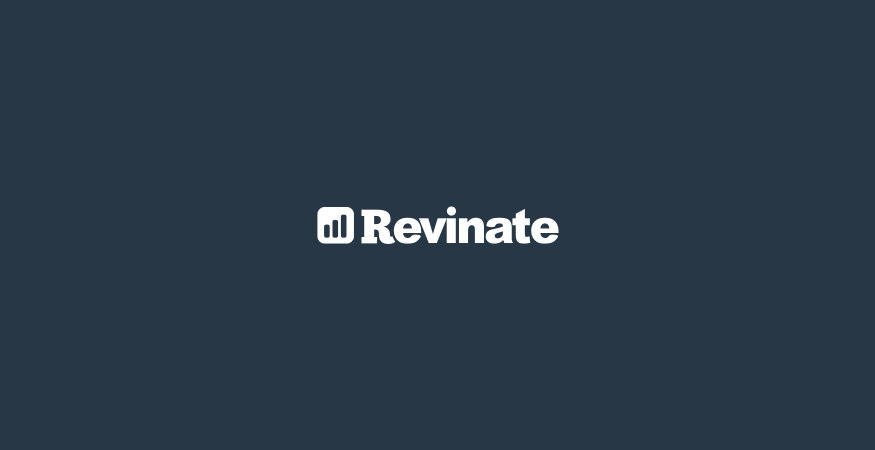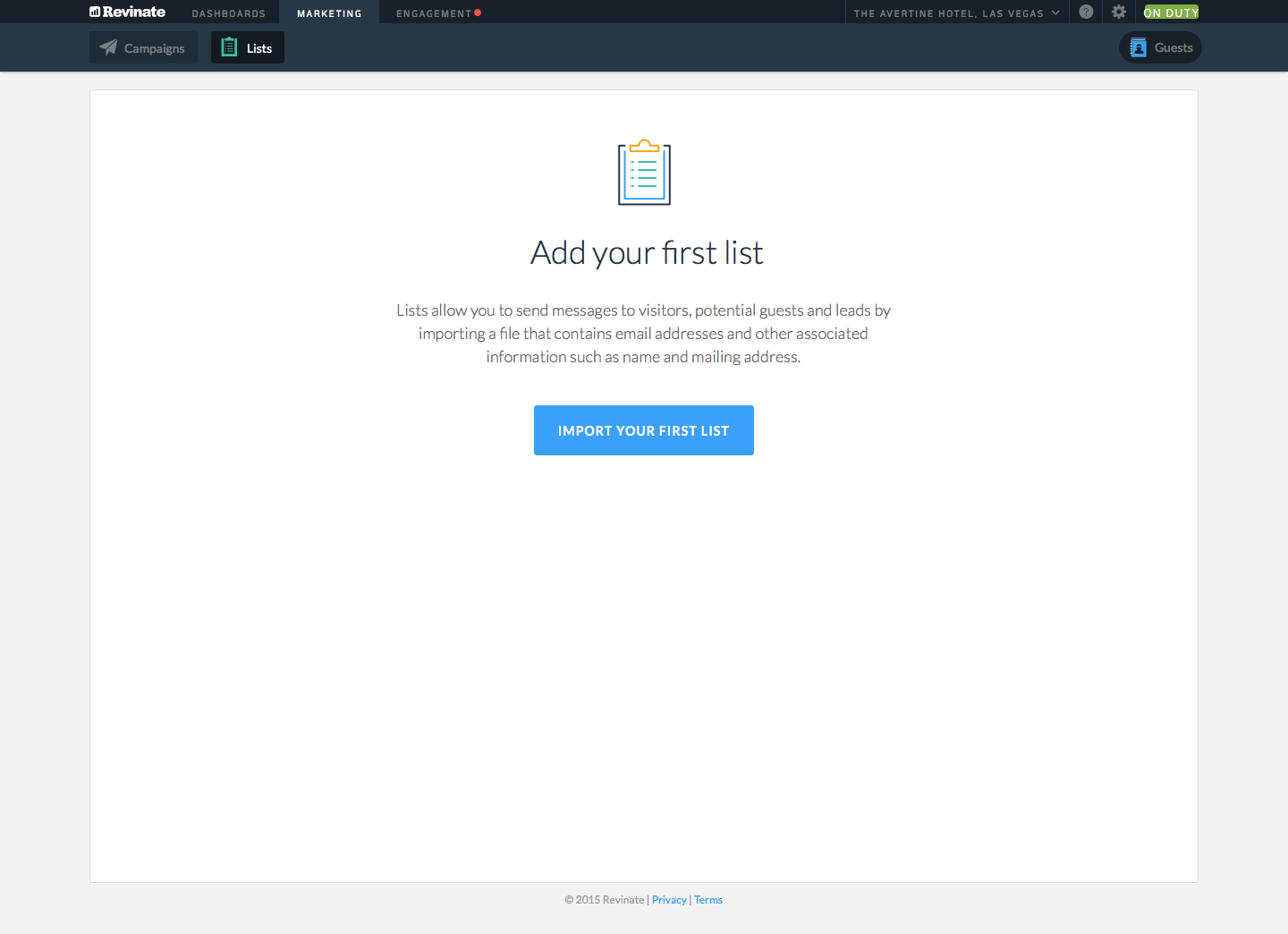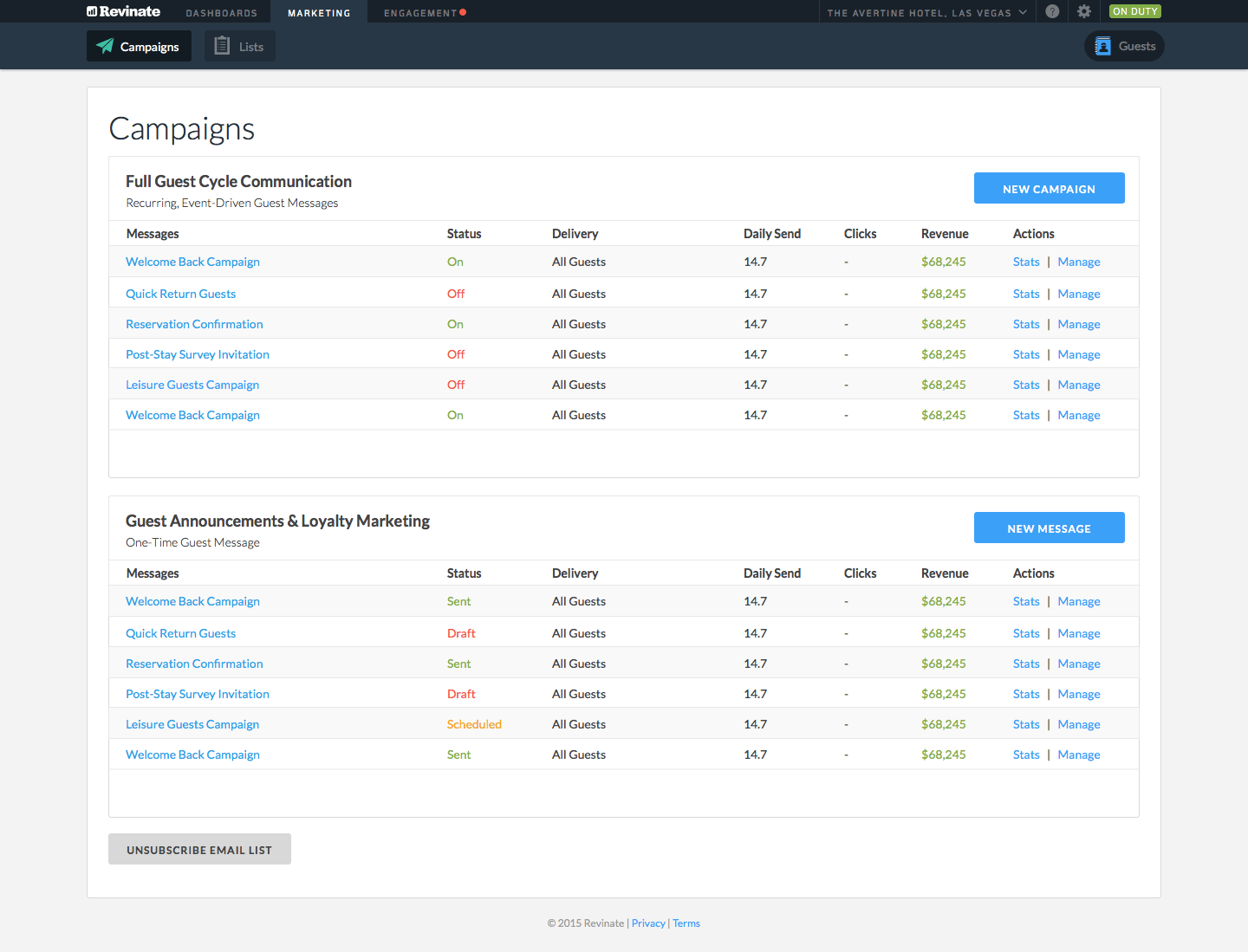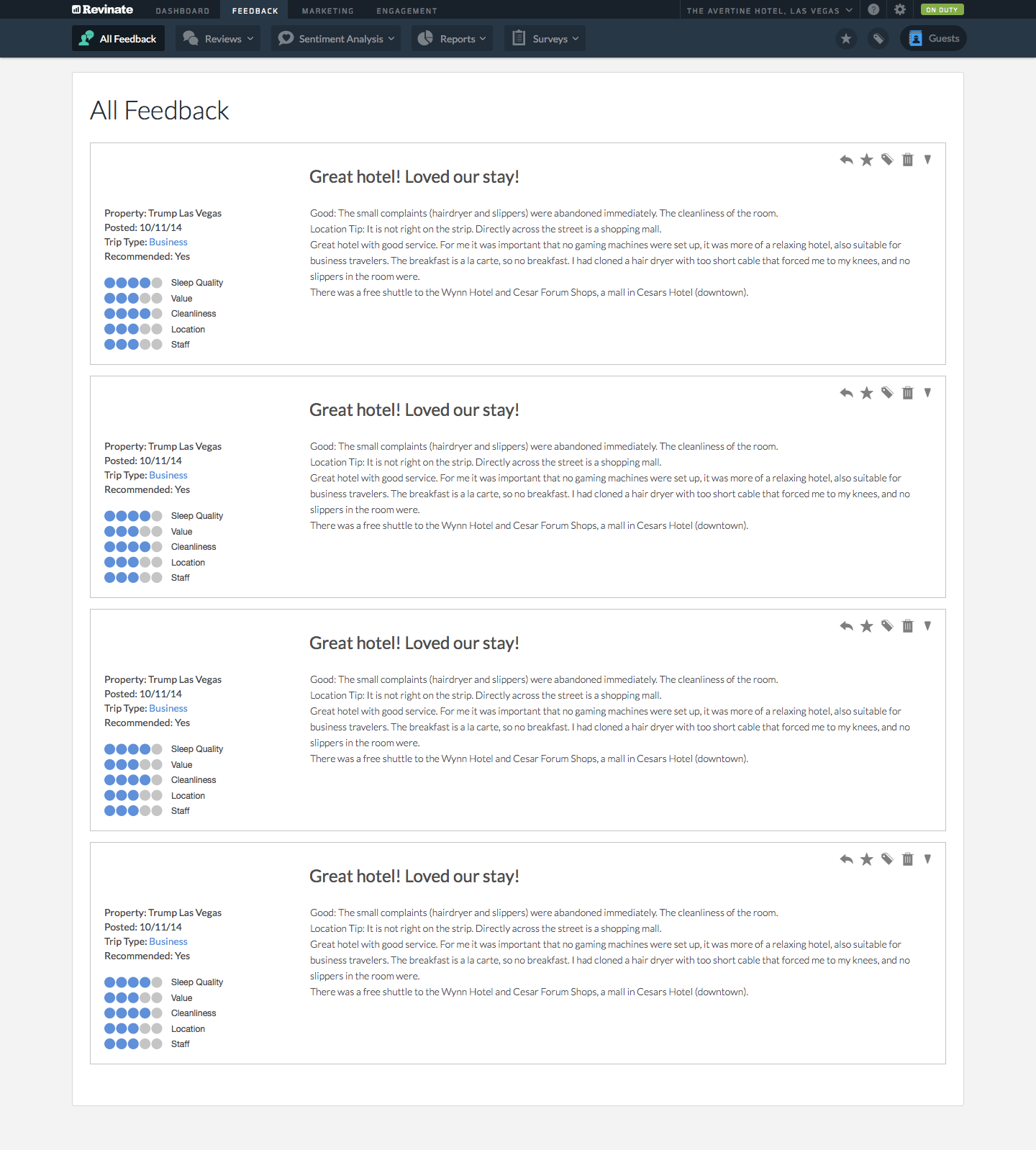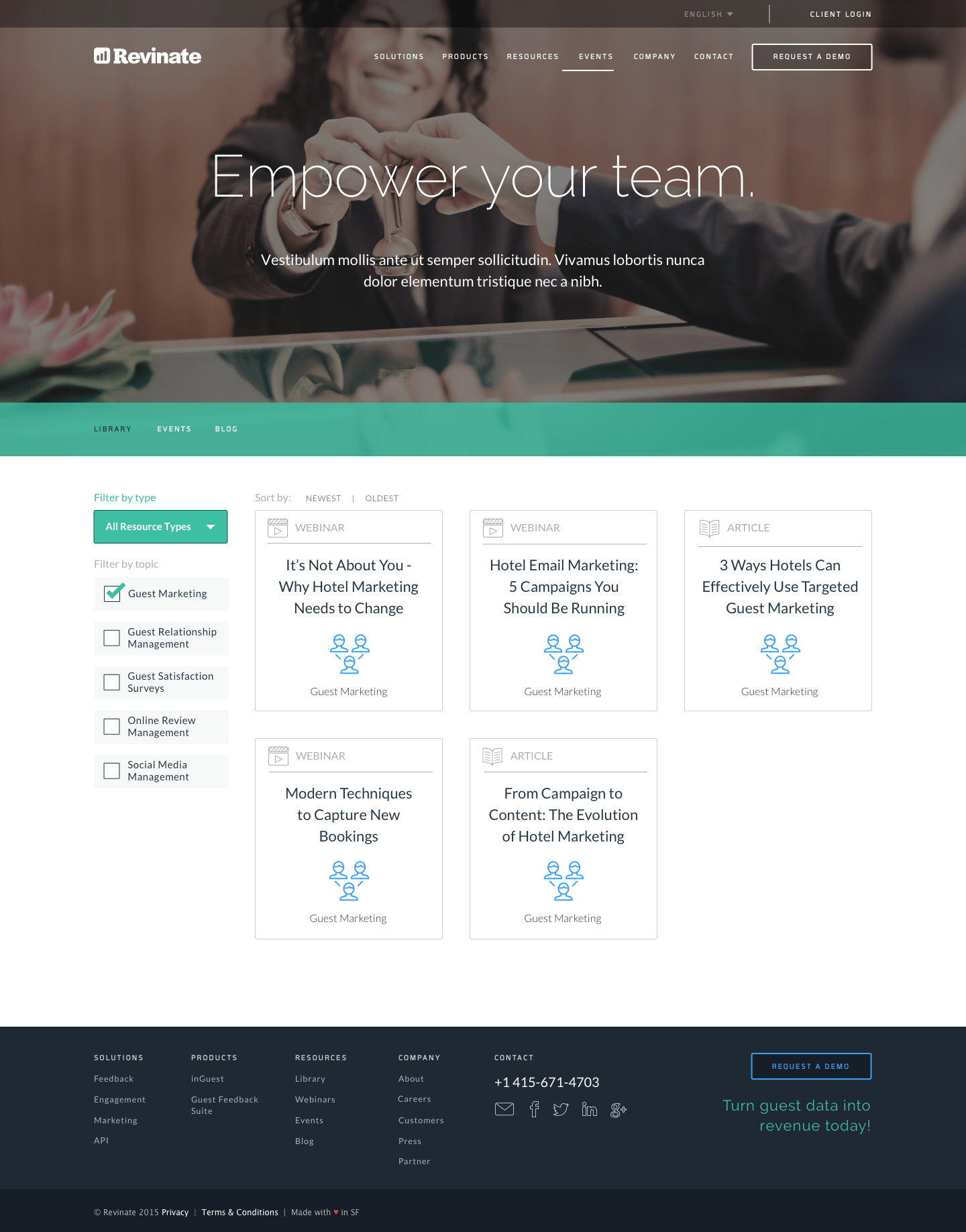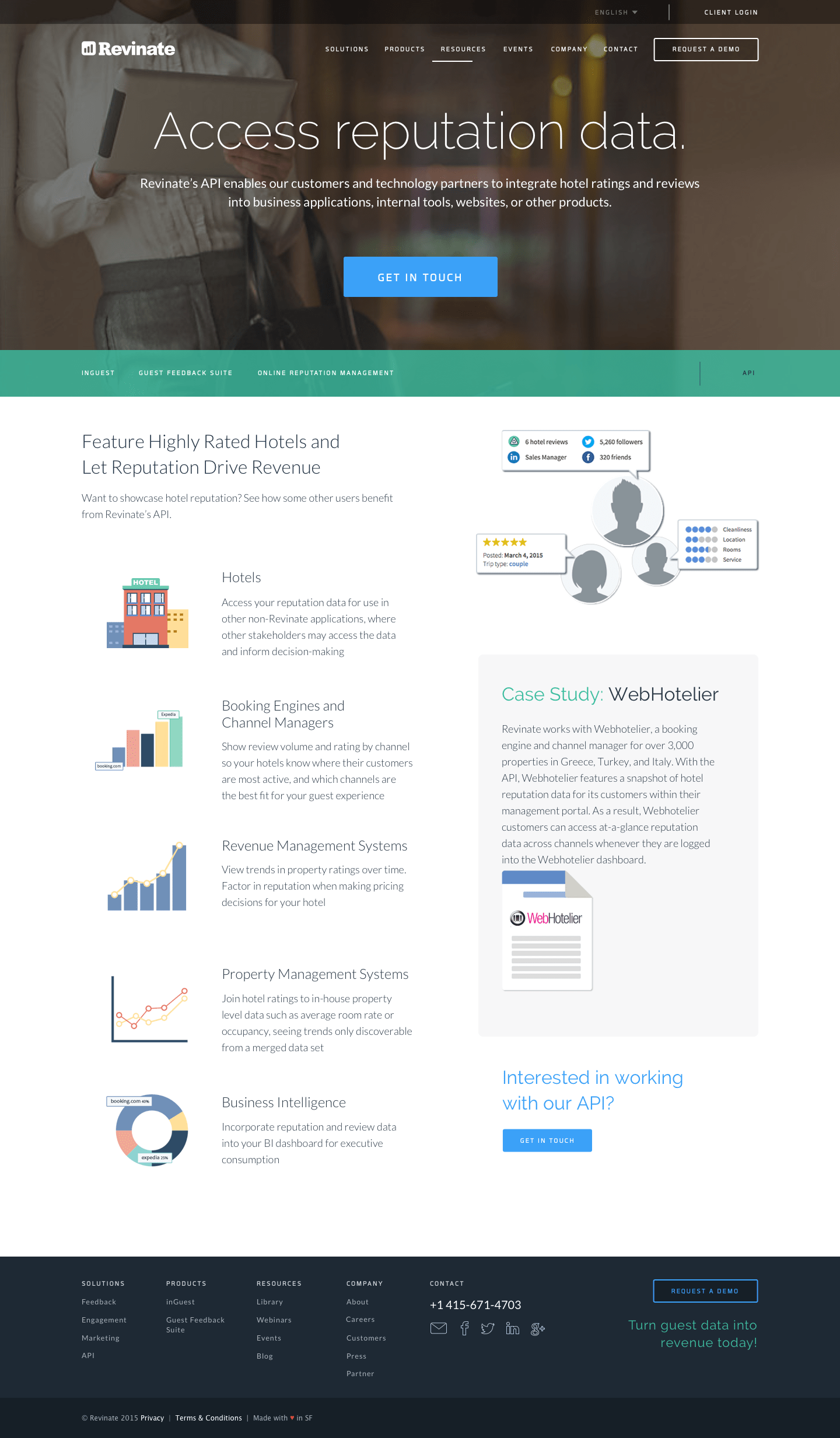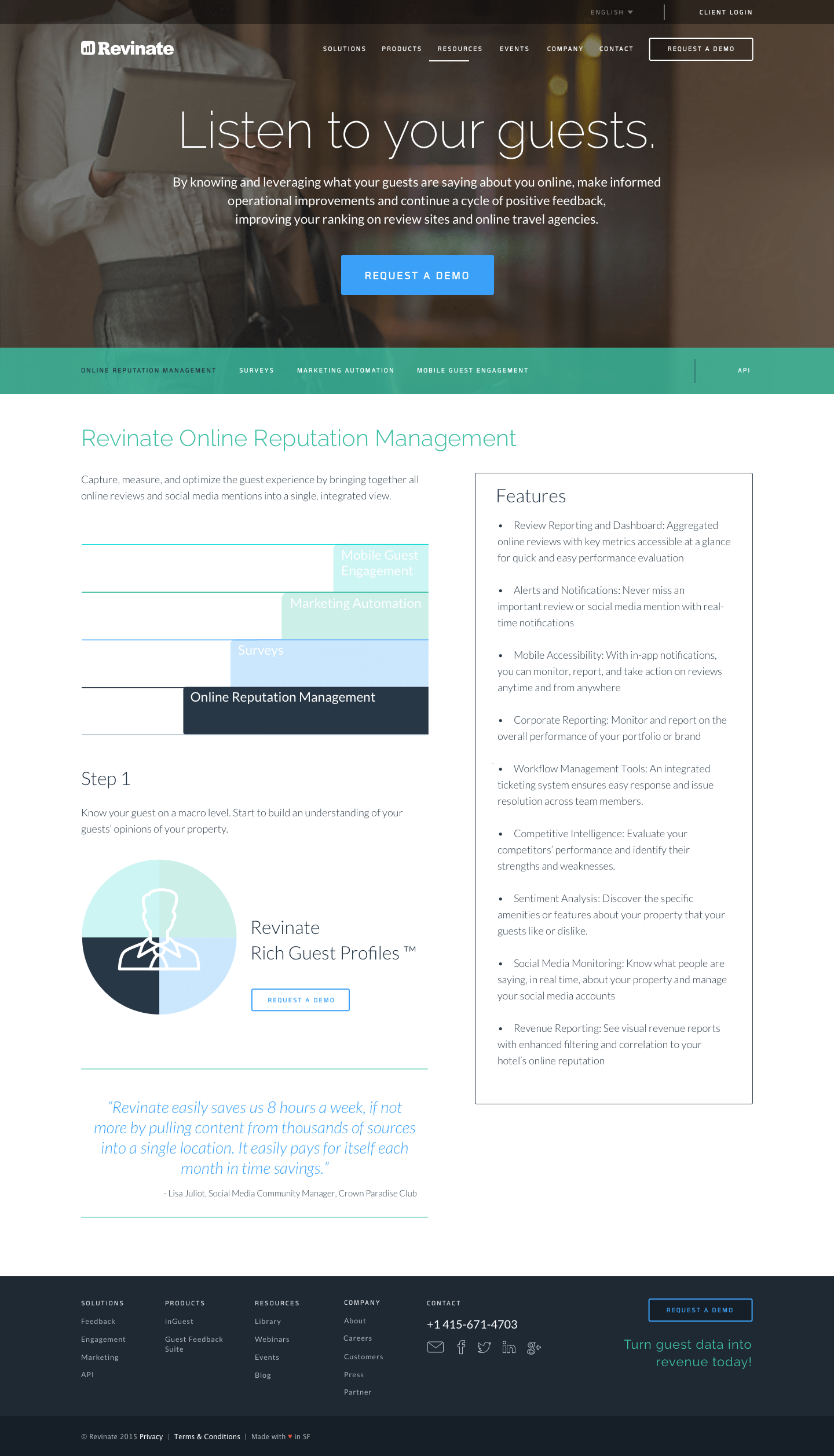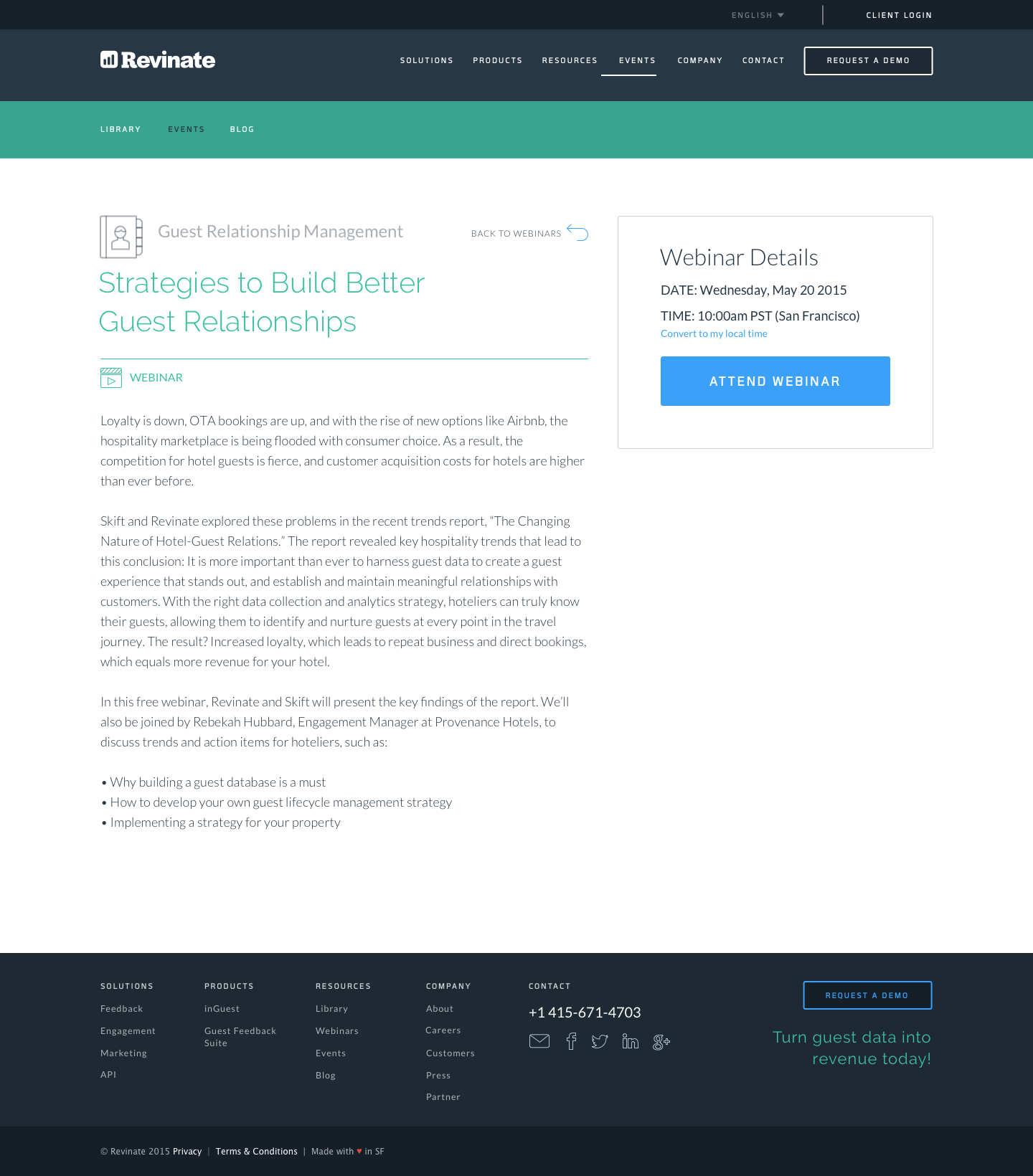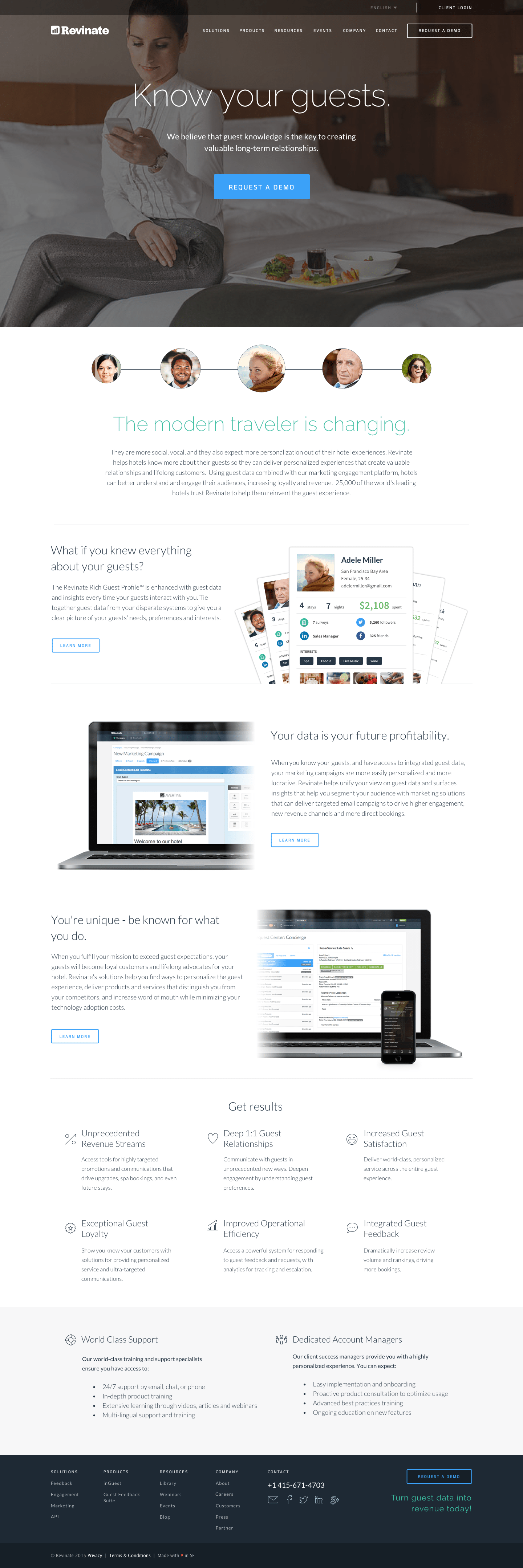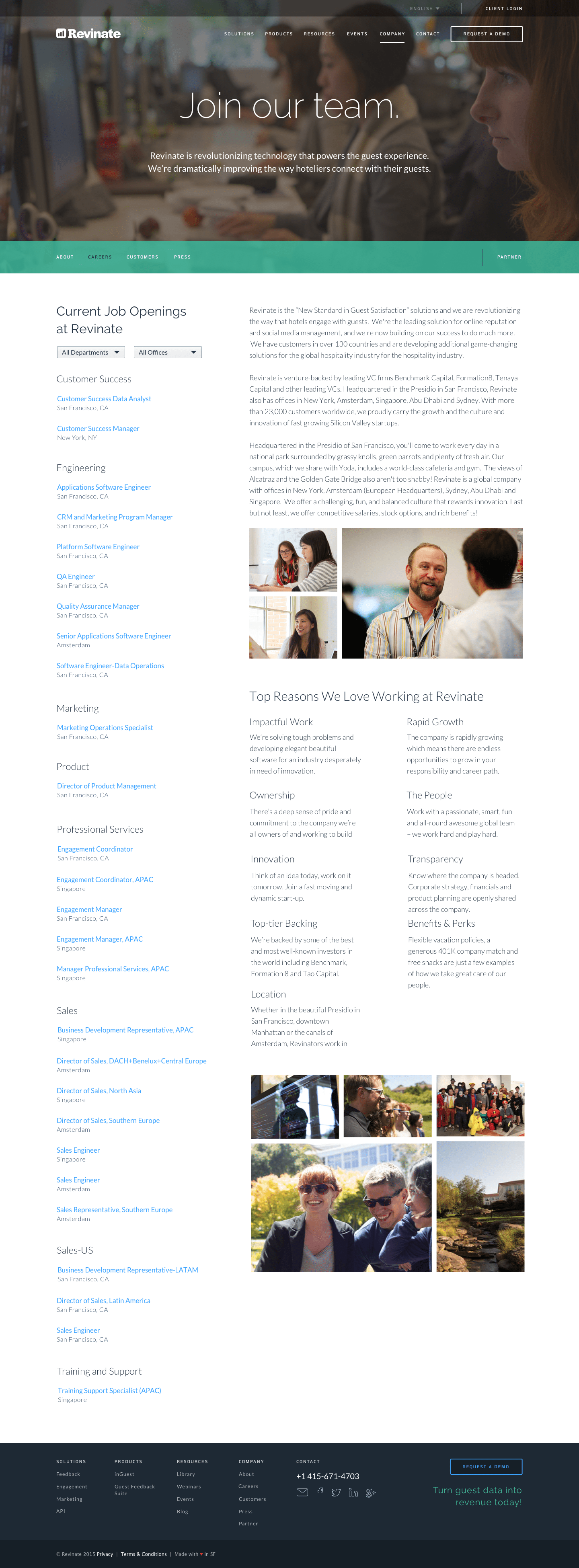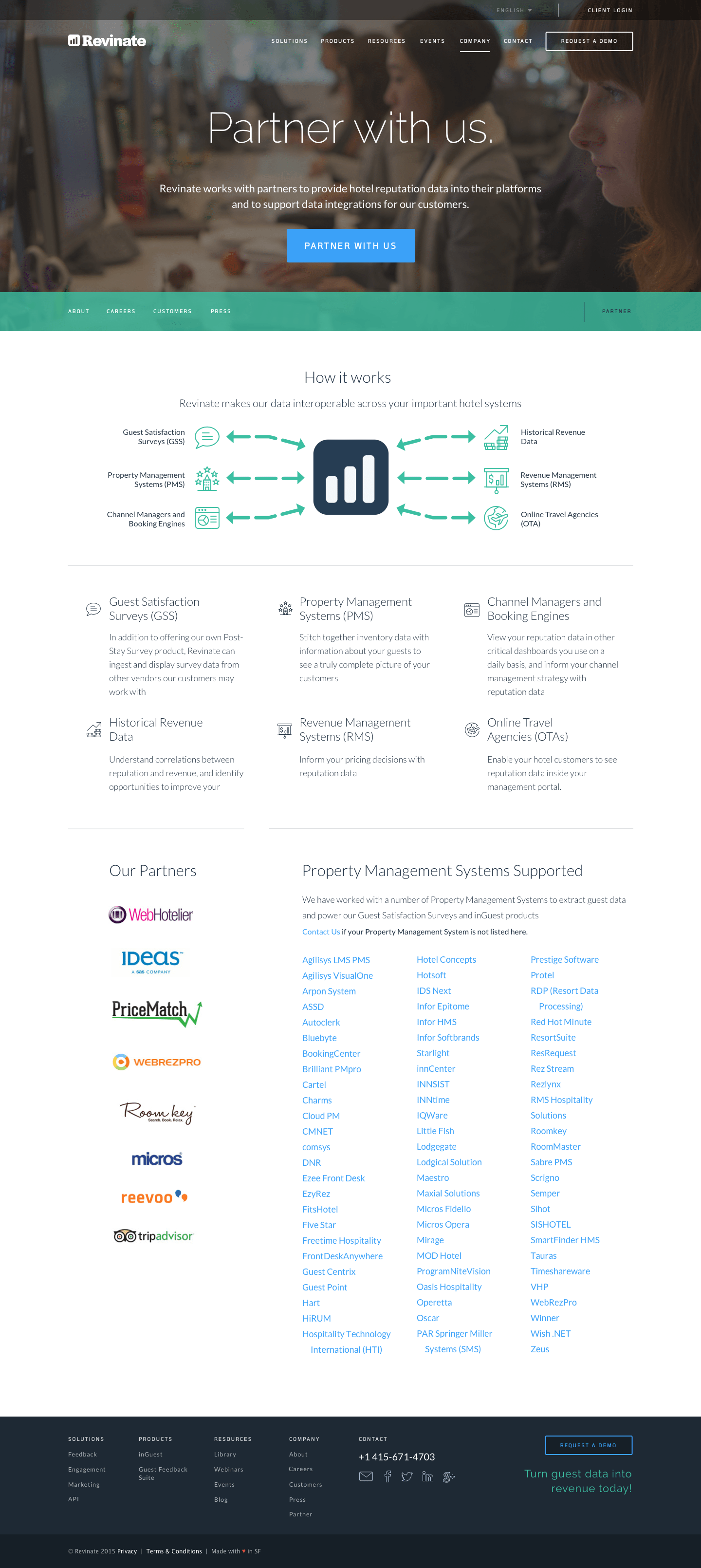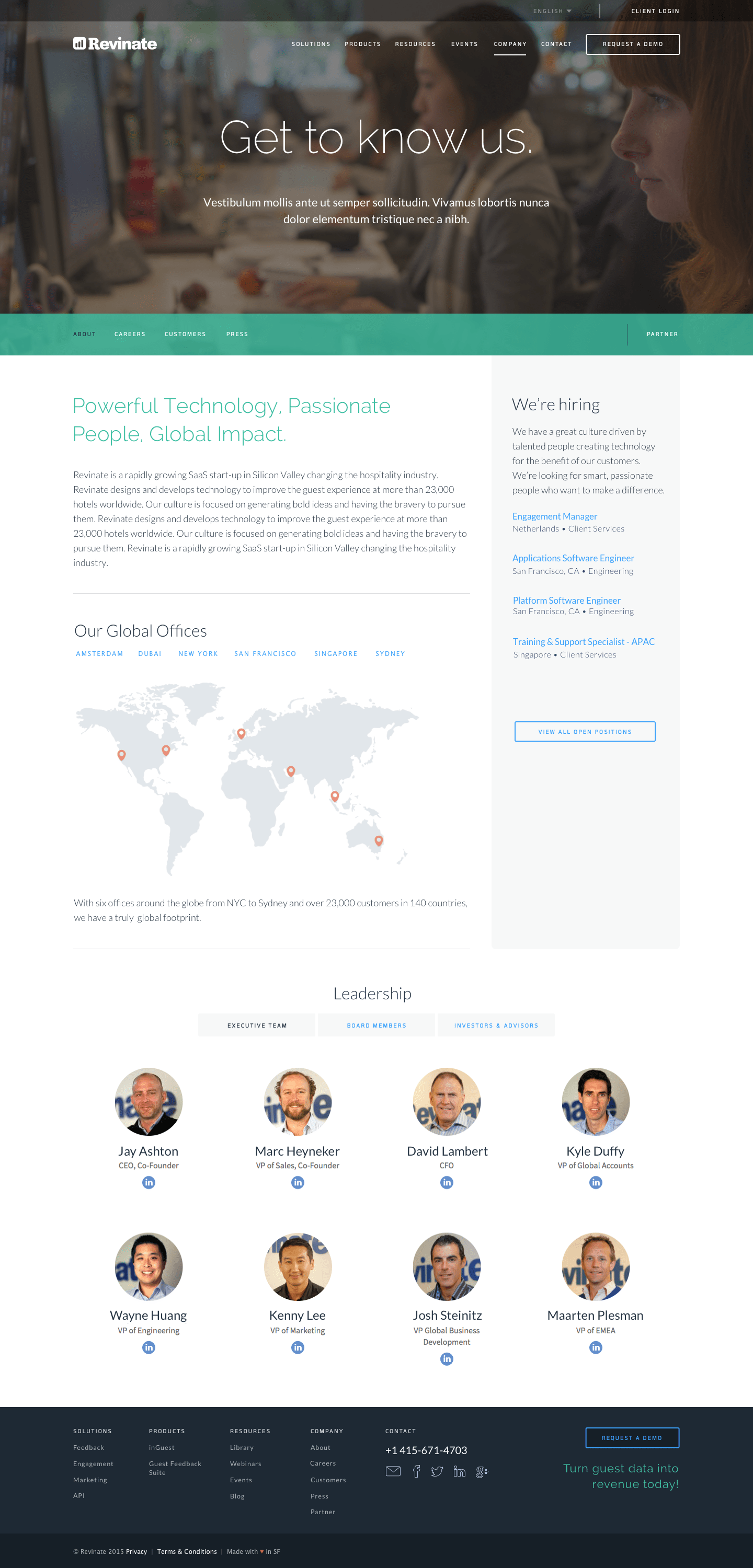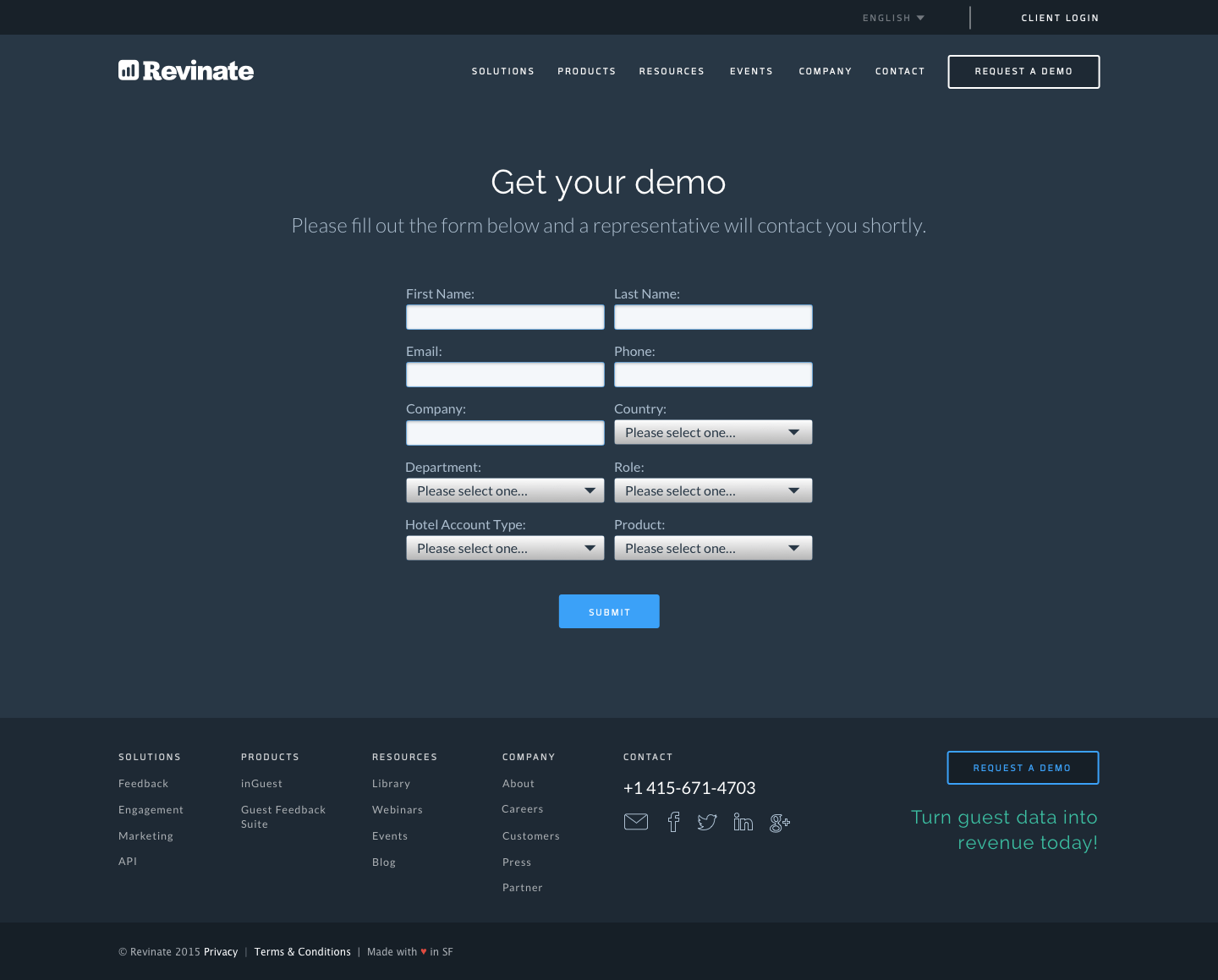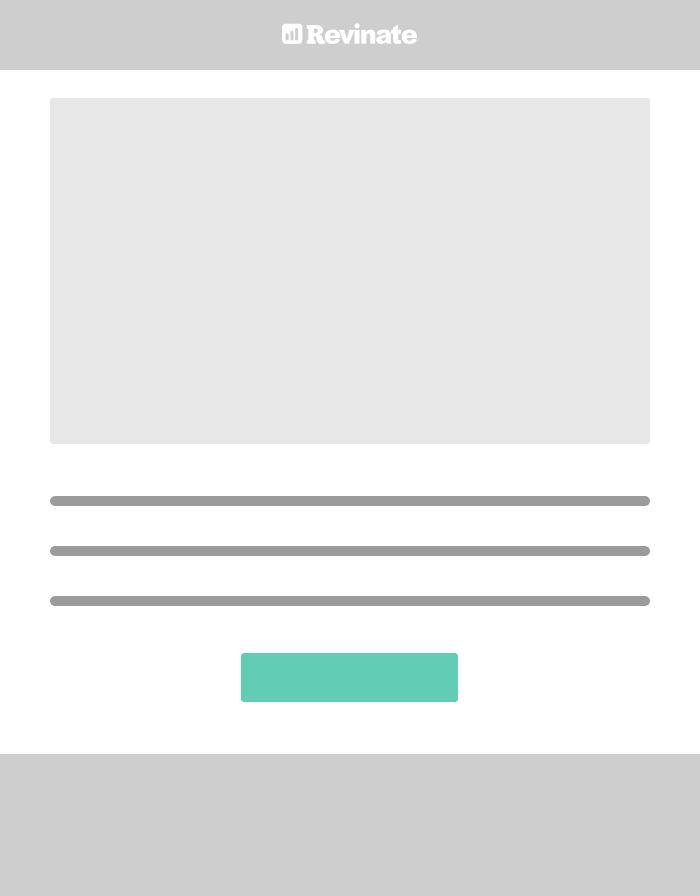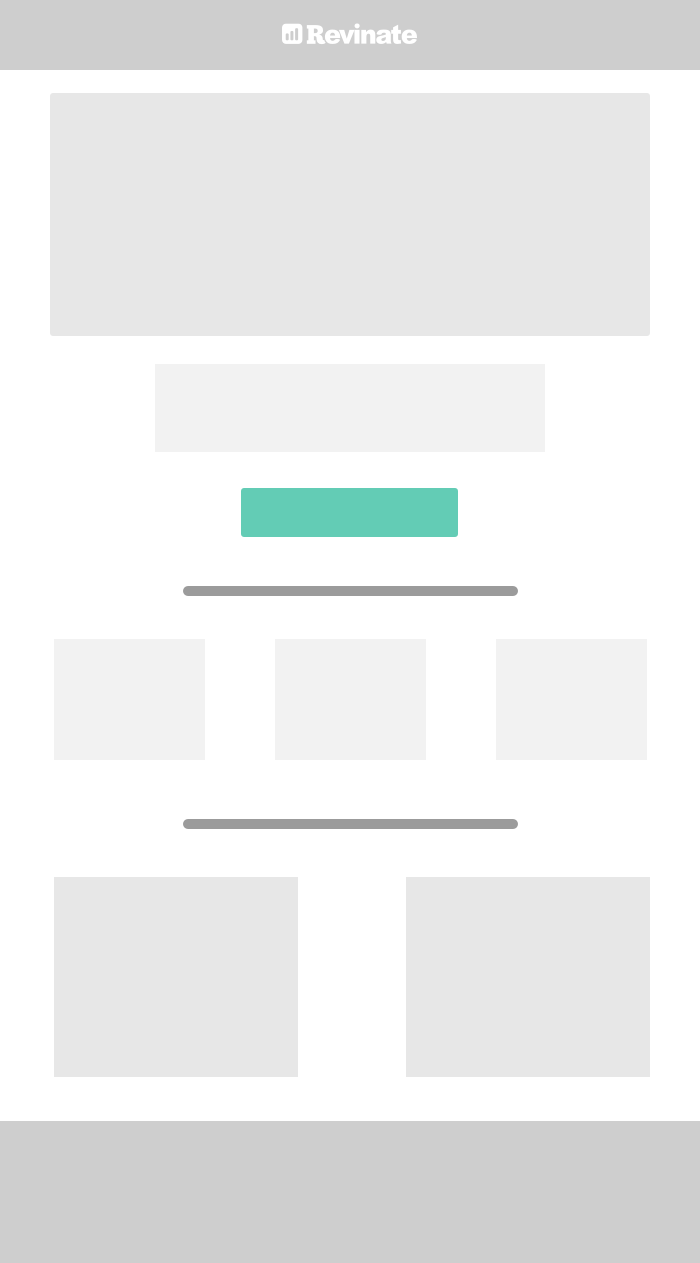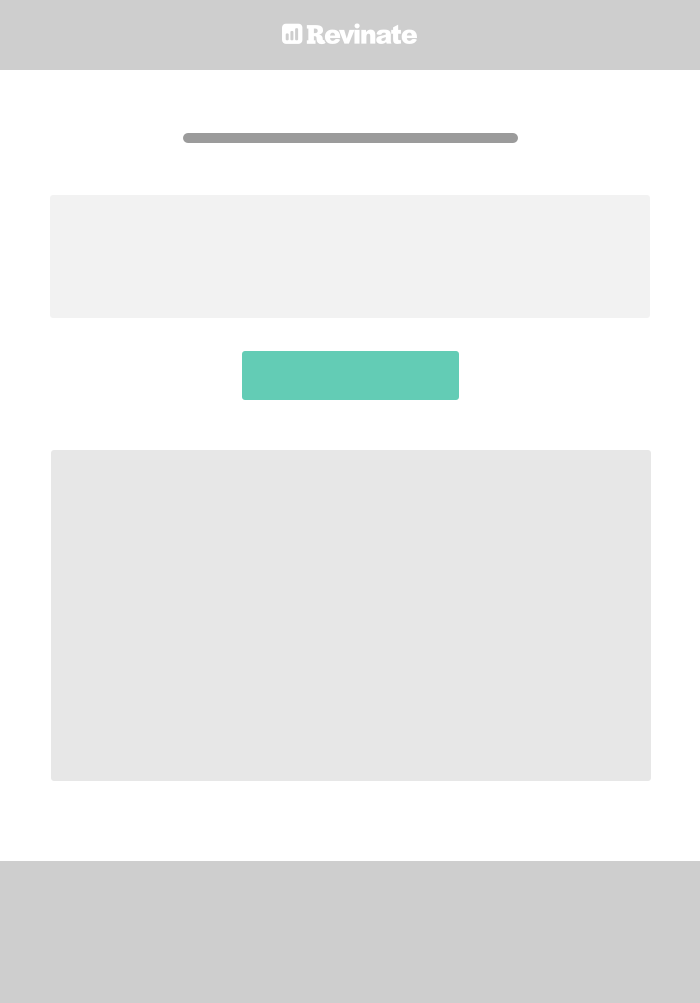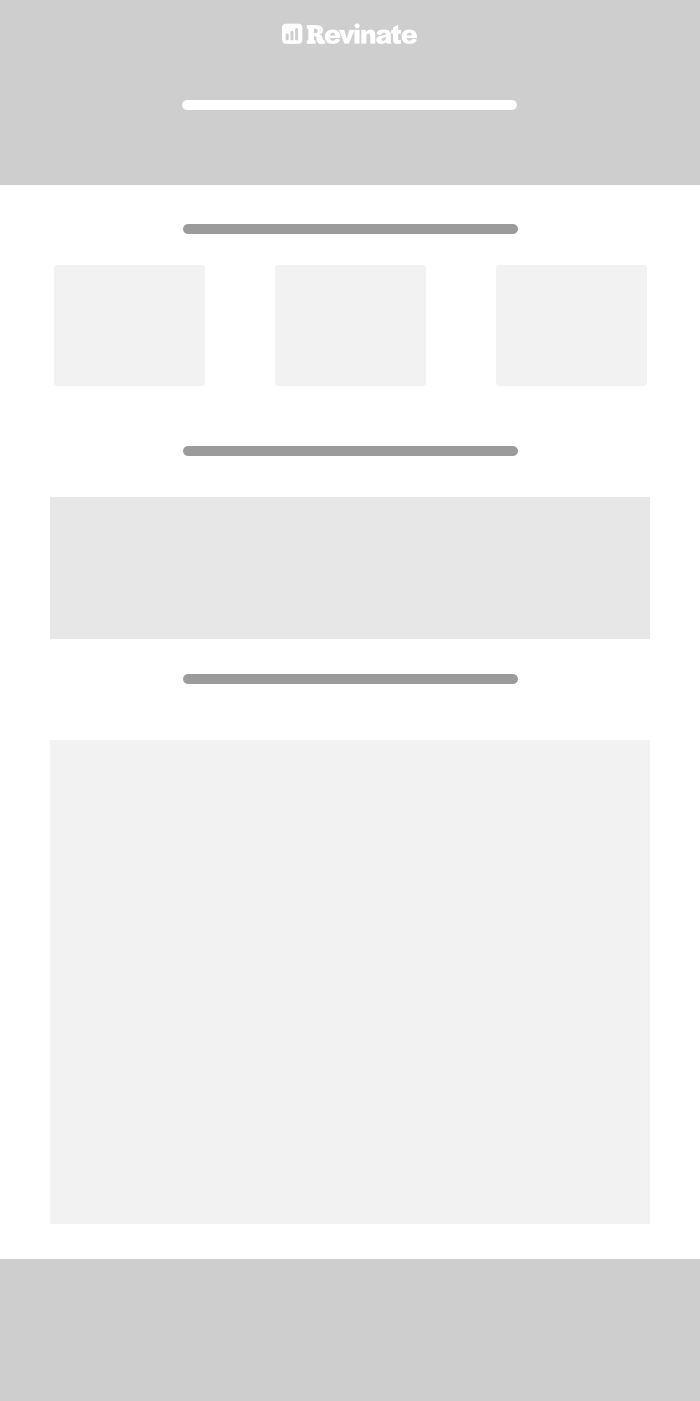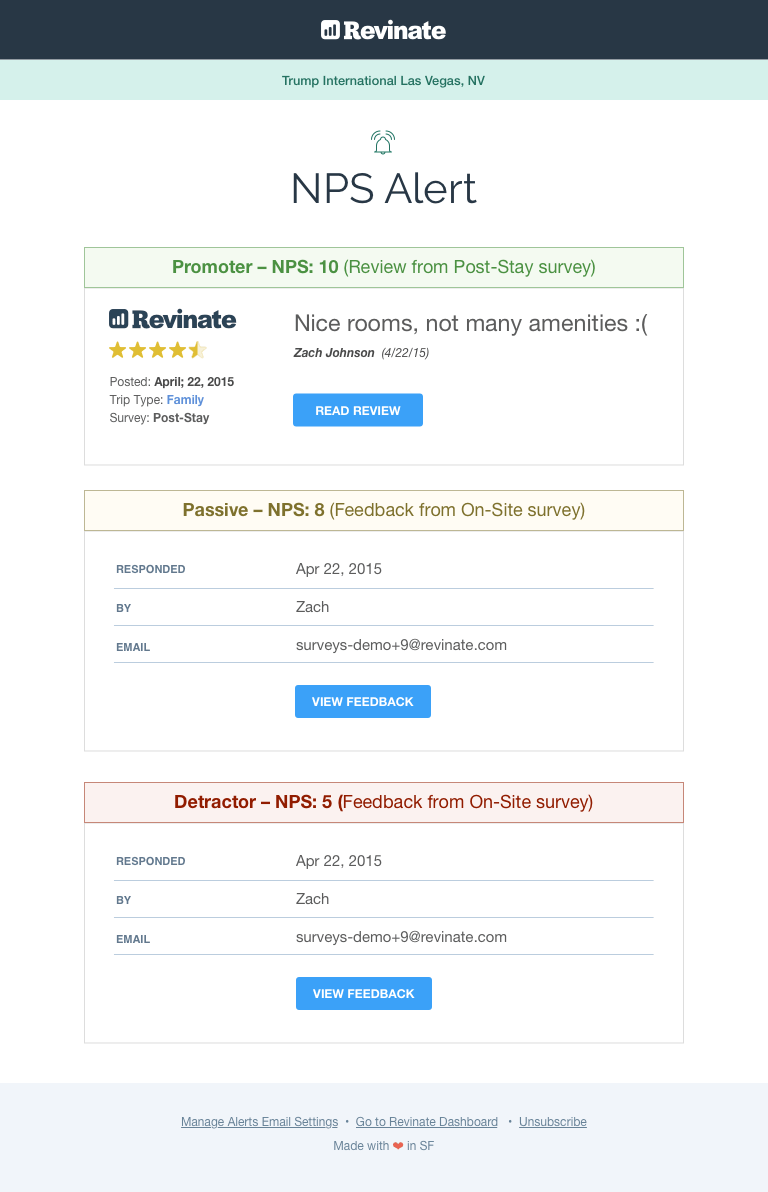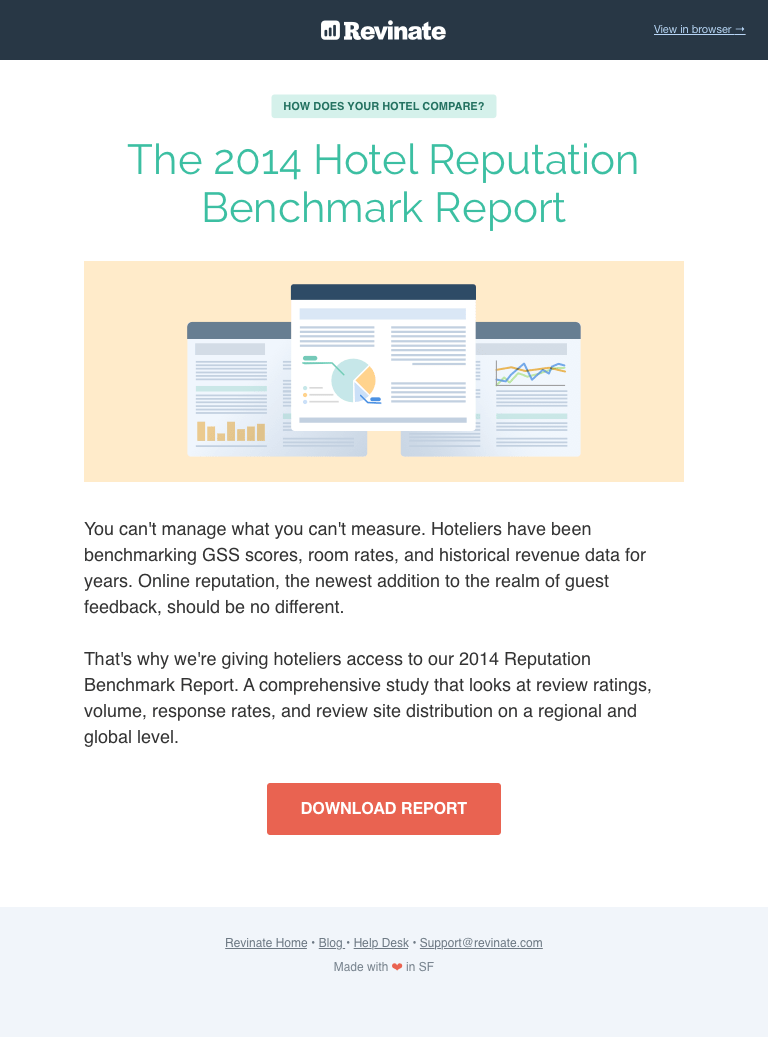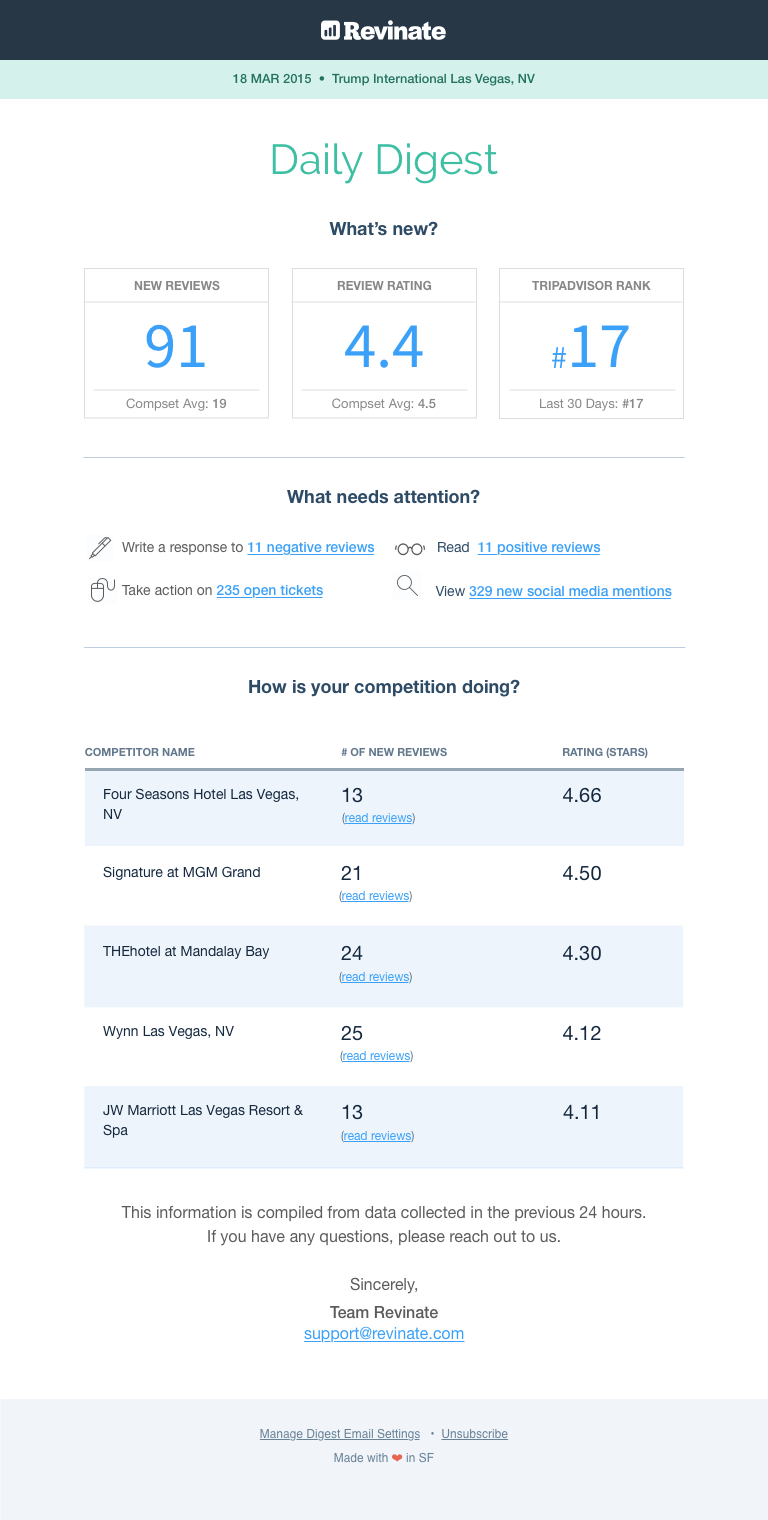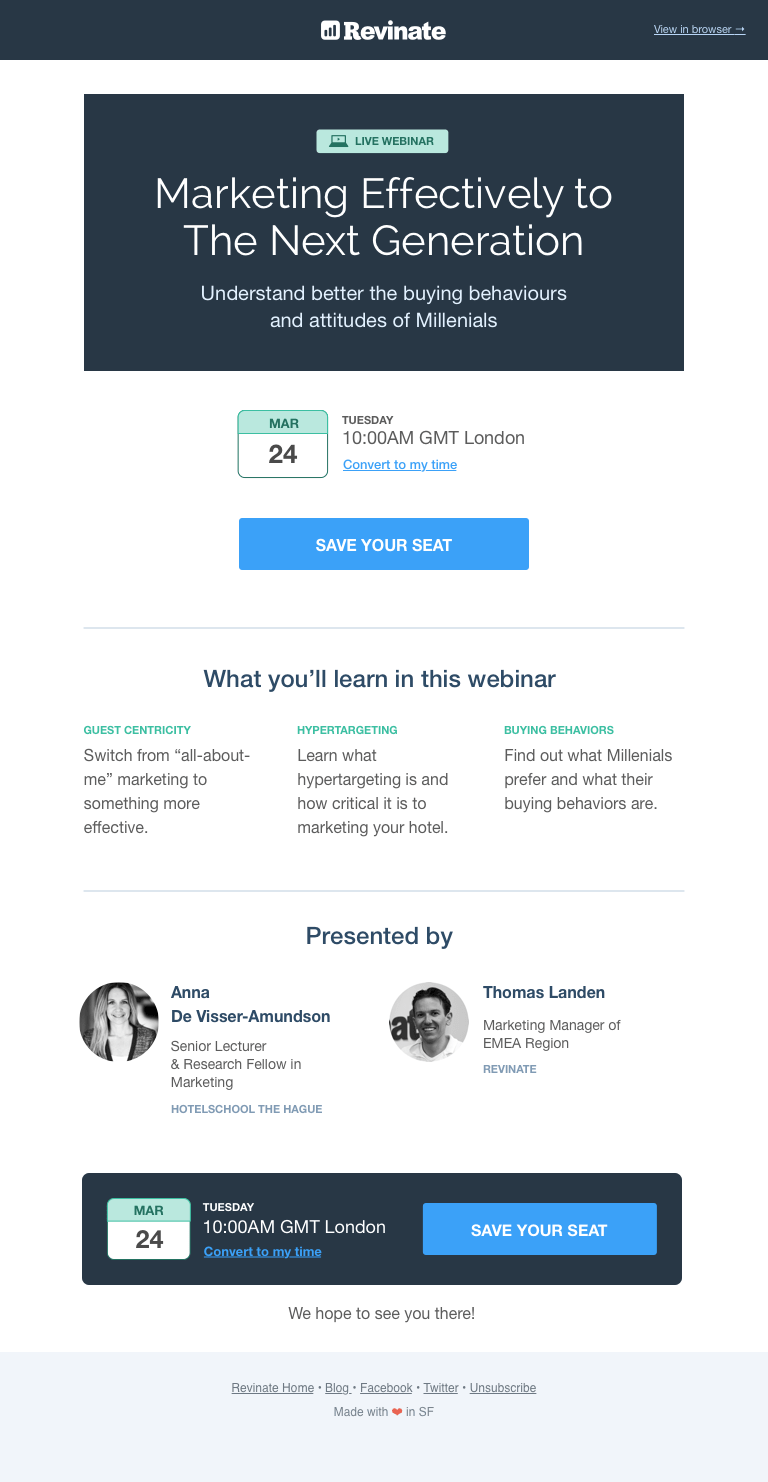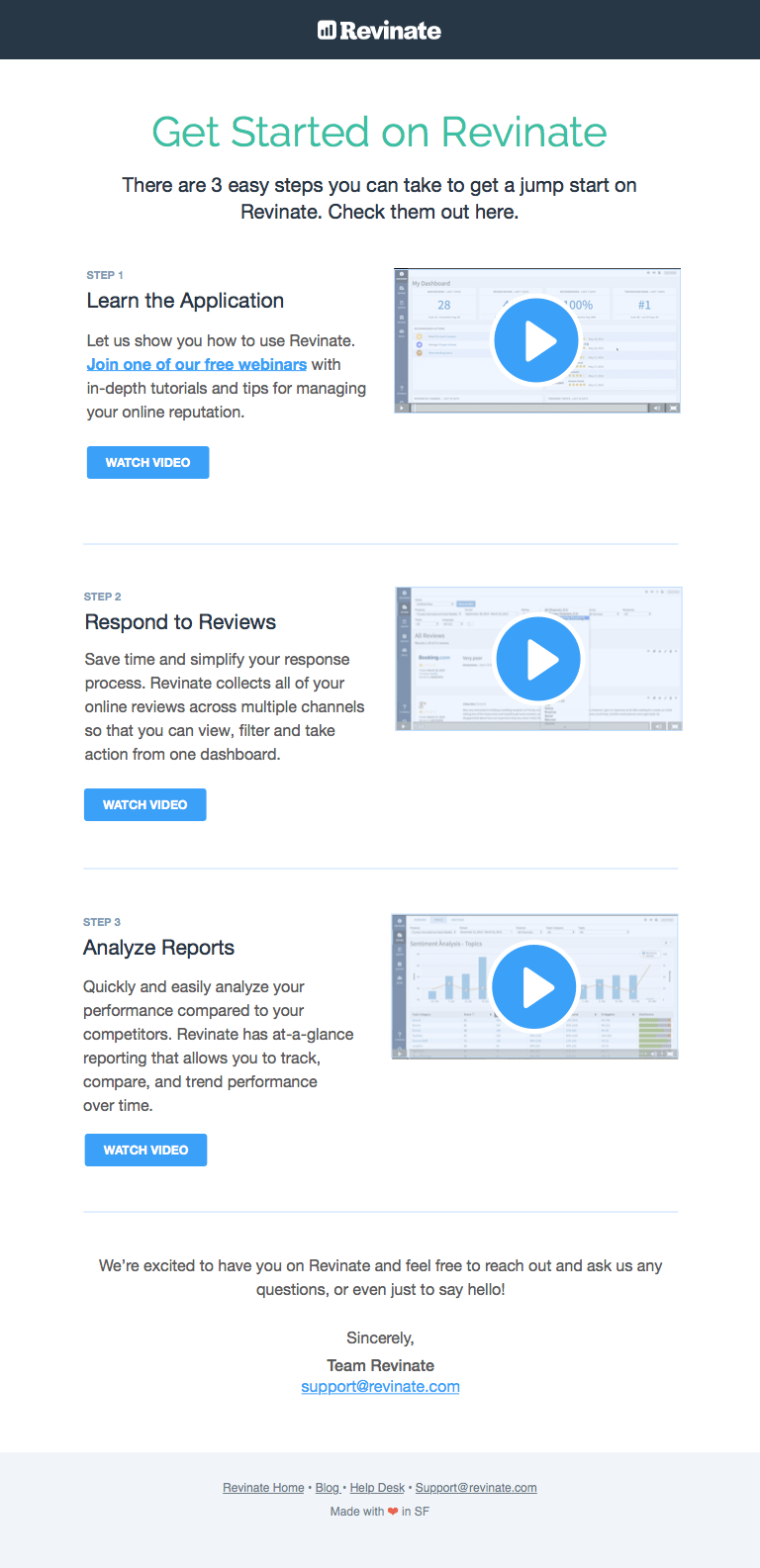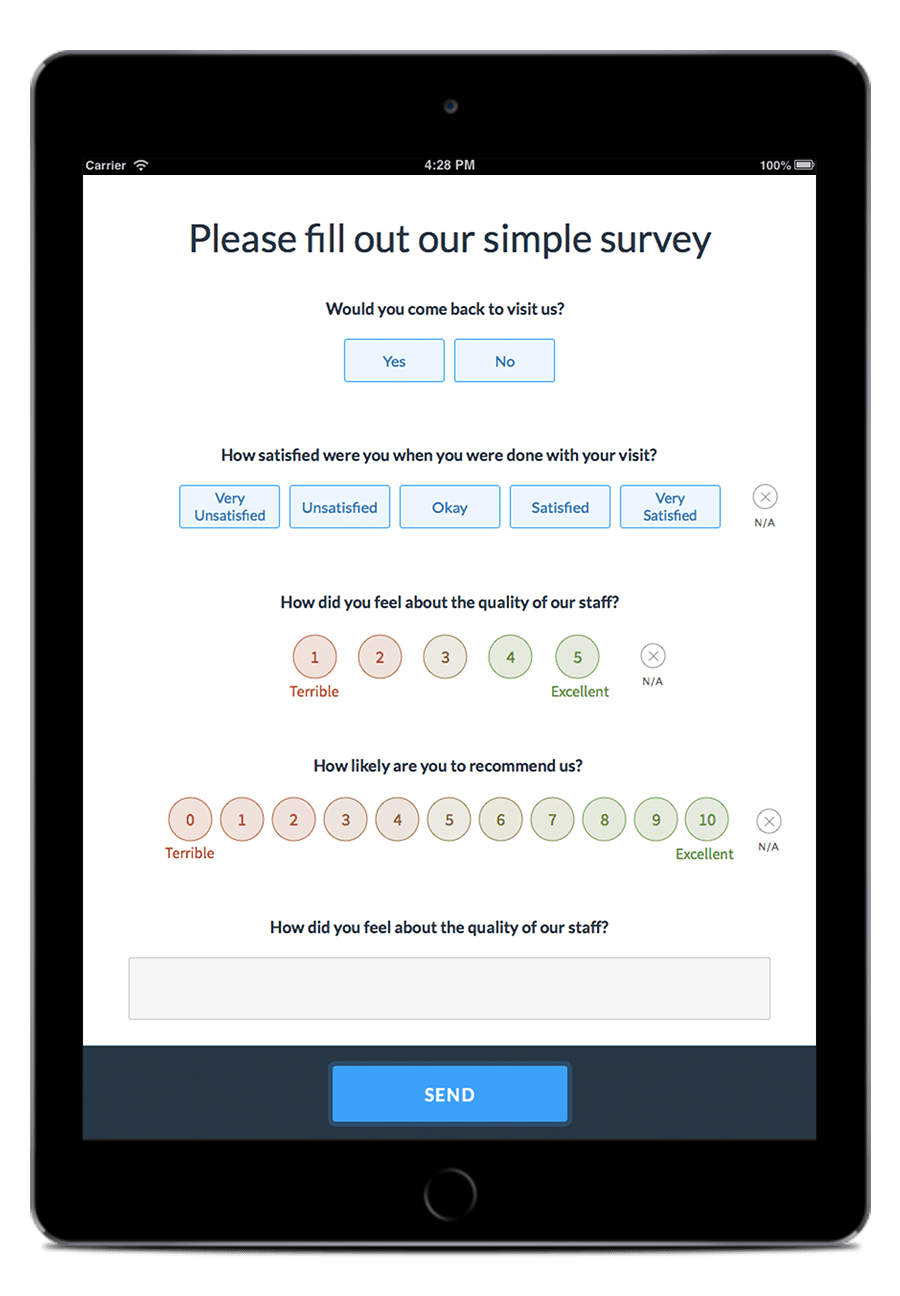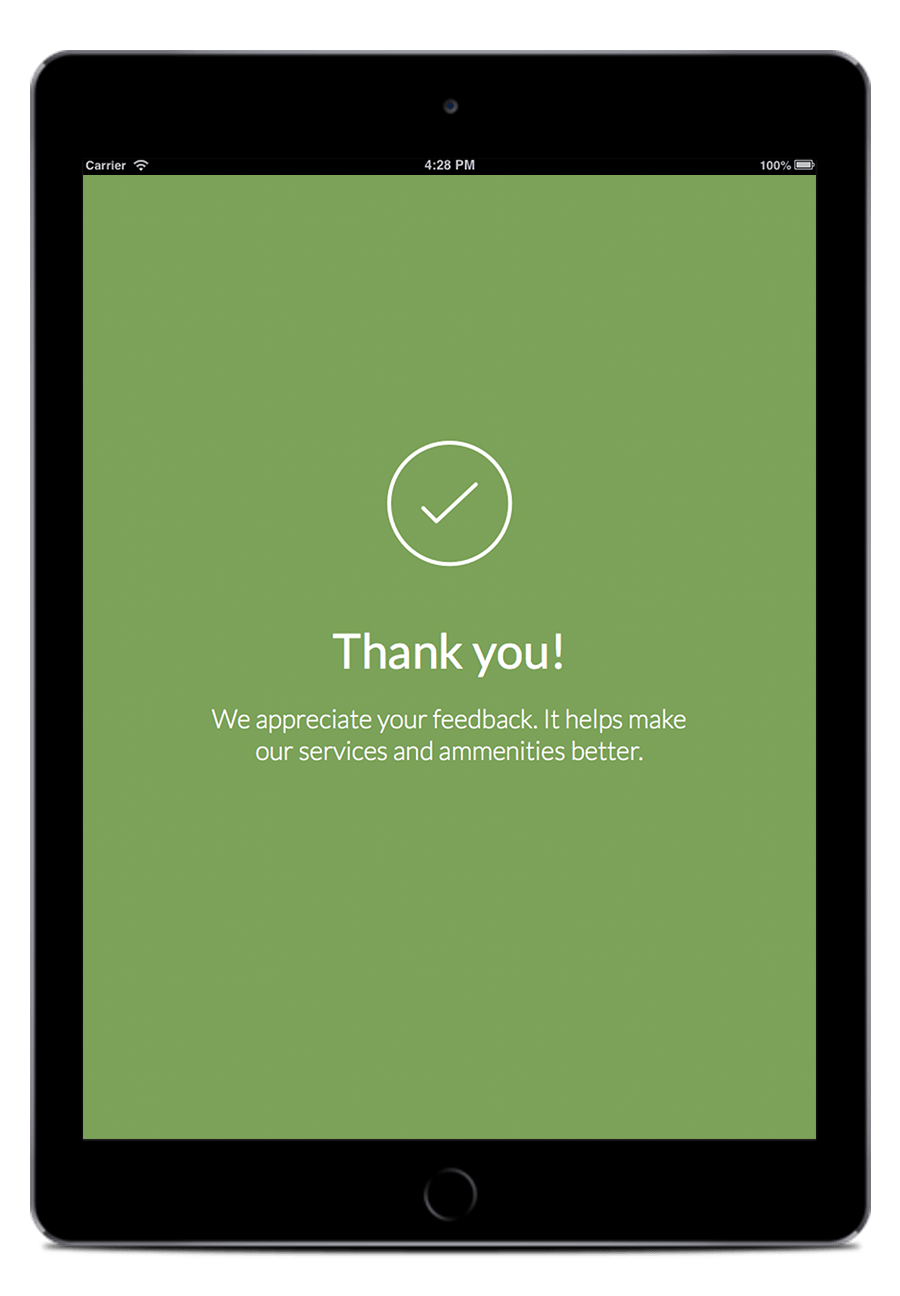This content is outdated. I'll be making updates to non-current work soon. Check back later!
Revinate
UX, Branding, Web, Email, and Mobile Design
Overview
Revinate is a global company of over 100 people working to build better technology for the hospitality industry. With over 23,000 clients it's quite well-known in the hotel space and prides itself on helping them respond and manage their guests in a better way. Over the past five years, they have produced a suite of products to deal with everything from a hotel's marketing to managing their reputation online to taking guest orders from an integrated web-app.
As the Lead Designer for the whole company, I had many objectives and had to wear many hats. I had to move quickly and think globally about the projects and features I had to produce. I got to have my hand in many different facets of design, and am really happy of the impact I have had on Revinate over my time there.
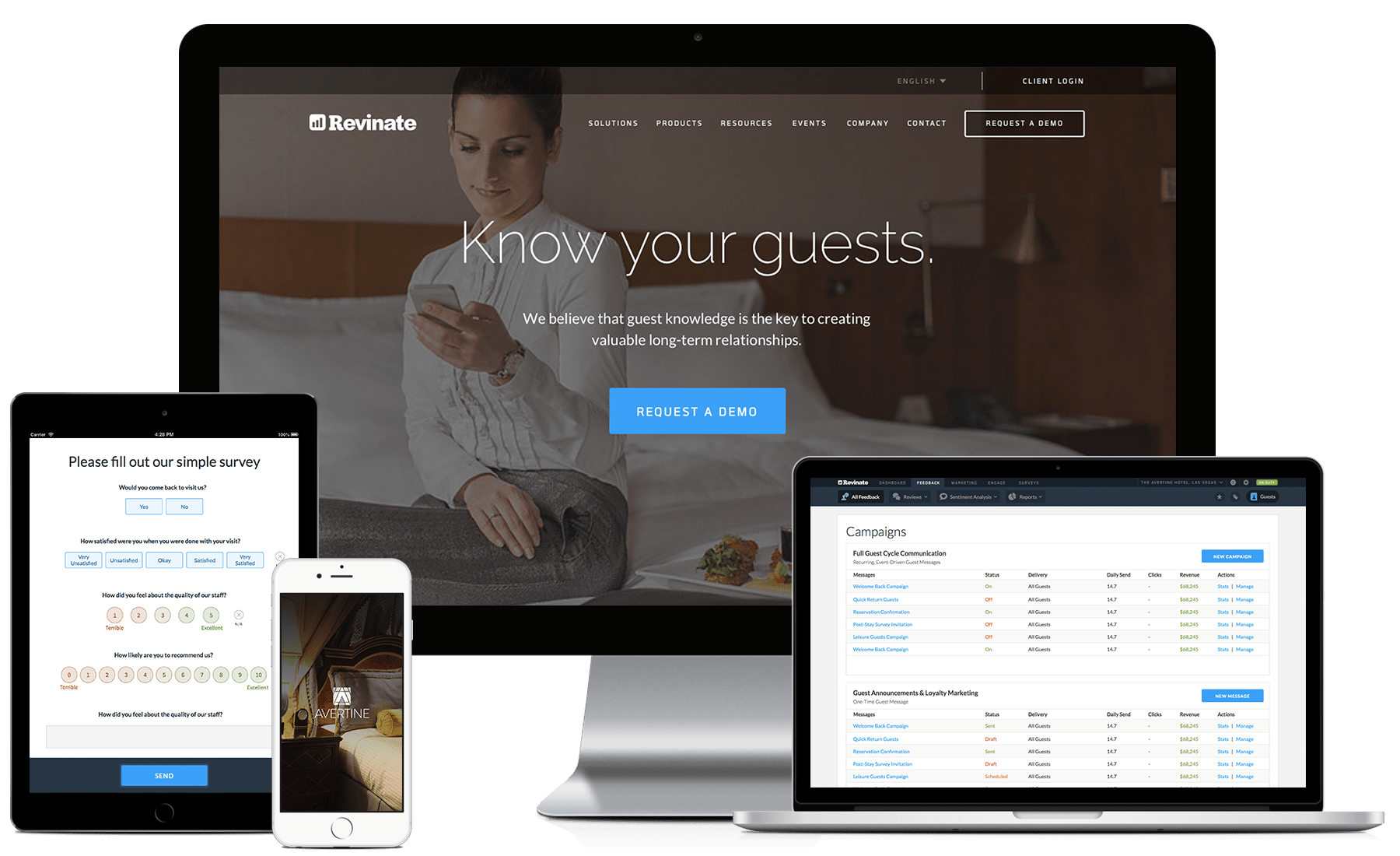
Goals
My overall goal was to elevate the standard of quality for design across the company. This was lofty for a young team of two (eventually three) to accomplish. I have come to appreciate the value of knowing what I can and can't do with resources. With every large project, I asked myself if it was time to tweak the process and standards we were referring to, and allowed me to slowly guide the company to a higher bar for quality across marketing and product without having too much impact on development. I set out to:
• Evolve brand slowly but surely
• Experiment with process
• Develop better UX throughout product line
• Create better standards for marketing materials
• Learn how to manage and mentor a small team
Branding
Revinate has always suffered from the "Rainy Day" color palette we all know and love. Over the course of my time with the company, I have tried to slowly establish and maintain a tighter and more modern set of guidelines. We were never allowed to make any drastic steps, but I slowly chipped away at what we could affect and produced a more evolved version of the brand I handed.
The logo wasn't allowed to be touched, and it remains one of the areas I wish I could have changed, but I did effect everything else that surrounds the brand.
The Products
Revinate started with one product, ORM, used to manage a hotel's online reputation and drive higher ratings on booking sites. I saw an opportunity to update the experience, because what was there was pretty dismal. I updated ORM's navigation scheme as one of my first bigger projects, but that was largely an exercise in better organization and a more scalable system being employed.
Users: Hotel Managers across the globe, Front Desk Staff, Concierge, General Managers. These people aren't very tech savvy and value intuitive and familiar interfaces.
I produced a more streamlined scheme by reorganizing sections and changing the way the pages were categorized. This was a light touch to the navigation. Later on I would refine the map a bit more to consolidate some redundant pages.
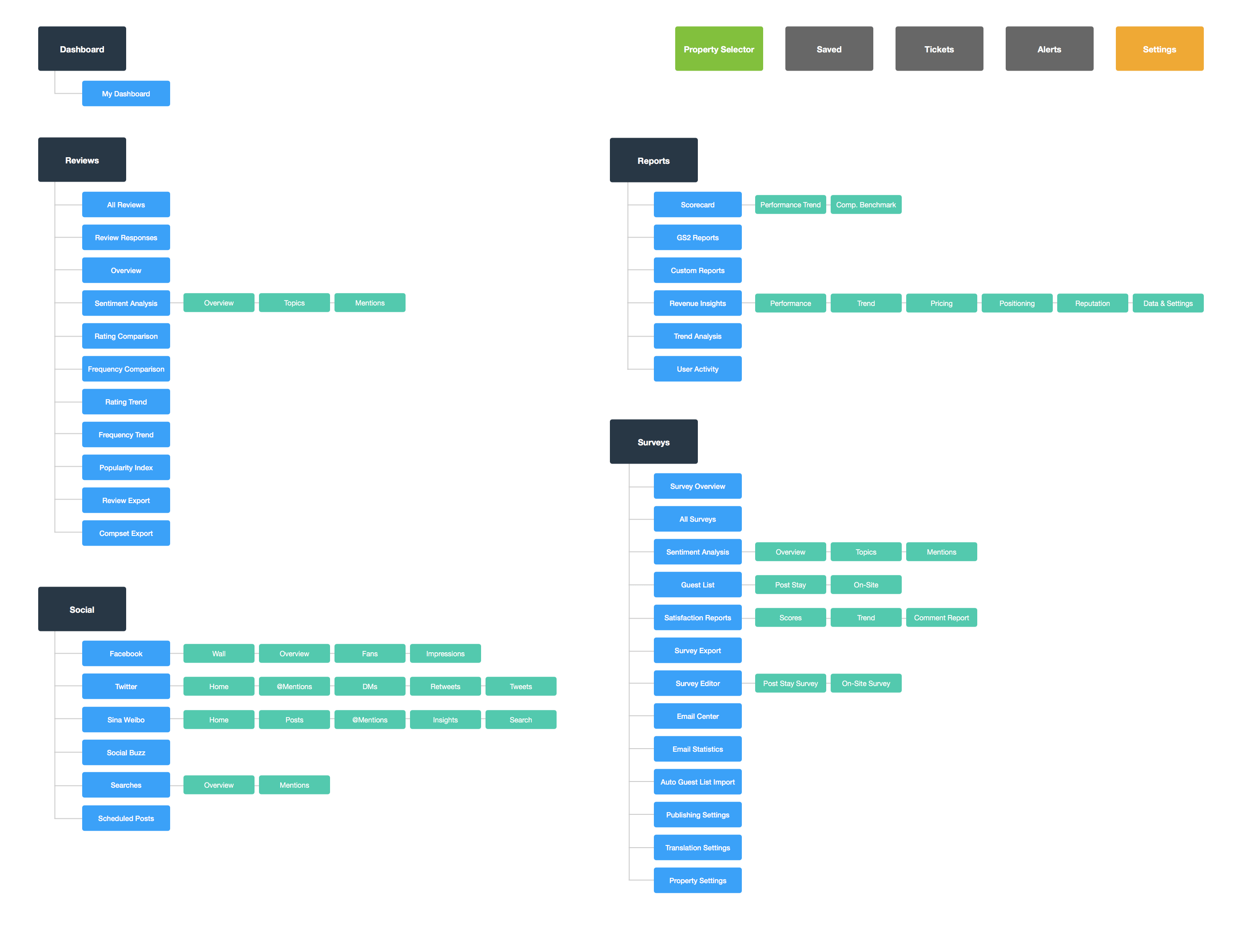
After a few sprints we had cleaner navigation, a responsive layout, and better visibility of primary flows.
My bigger contribution to the company, though, was on a design strategy I spearheaded called Unification. It dealt with the corporate site, email communications, and the product lines. More on the website and email work later.
For Unification, I had to unite two separate products (ORM and inGuest) into a single user experience that was easy to get through development. It also had to match our updated brand standards. ORM was five years old and inGuest had been developed quickly without any design input, so the structure had to be extremely flexible and be able to be broken down into stages for easier deployment.
We evaluated many different ways to attack the issue, and ultimately decided to start by taking inGuest and making it into what we ultimately wanted - a single, unified product. Since the product was built off bootstrap, it was the easiest to change, and I set out to define a way to get everything to play well together.

First up was to define a navigation system that could be both scalable and make sense to the user. At the time, the marketing team was restructuring the way the products were being sold, and it gave me the opportunity to align the navigation system to that structure. The new structure was Marketing (inGuest), Engage (inGuest), Reputation (ORM), and Surveys (ORM). This set the basis for the scheme, and allowed me to work in an easy way to up-sell our customers, which was a big win for our sales team. This is how the new navigation worked out:

I consolidated pages that could be gathered together, as a serious amount of bloat had occurred in the product. It was a fun exercise to negotiate how best to simplify the structure for the user.
I took our new palette and expanded on it for use inside the application. This gave me a tight palette to make graphs and charts as engaging as possible, since most of the product was data and charts.

After evaluating many options, we decided to design the solution from the inside of inGuest out. Since the user was going to be staying in these four separate areas for long periods of time, switching between them wasn't a highly used flow. This prioritized the second tier of navigation, and allowed the tertiary to be easier to access across the board. Pages inside of ORM that had tertiary navigation fell nicely inside the new layout.

Next, I focused on creating a structure that could incorporate both products and still make it easy on the user. I created tight zoning rules so that across the application the user would find the experience consistent. The development team created a living style guide and we documented all the patterns that would be used from that point forward. If a new one needed to be created, we developed it inside the style guide first, and then referenced it inside the product to keep things tight.
The results were spec'd out and sent to the dev team for review.
The Website
While I worked on one large website redesign and one small refresh over my time at Revinate, the latest version is the one that best shows the work of my team. This is where the website was when I first started working at Revinate. Our work built off the momentum of my previous designs and was spearheaded by my co-worker with myself overseeing the direction. Using the guidelines I set into motion, he interfaced with the Marketing team on content and then would hold regular critique sessions with me.
First stop was to establish and refine the site map.
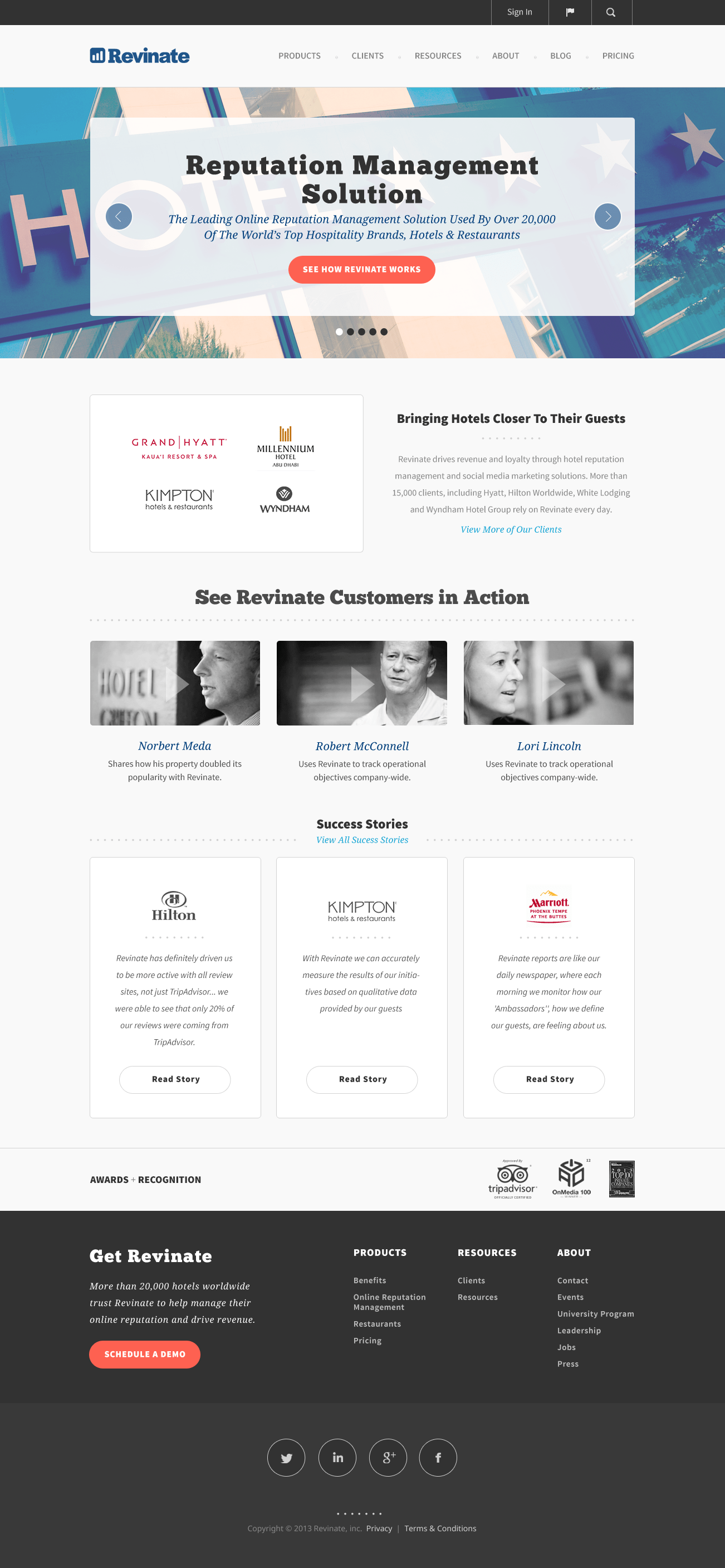

The emails we were sending out to customers were all over the place - some hadn't been updated in five years and were in bad shape, others were on-brand and responsive. What was needed was a holistic view of all the emails that were sent out from all corners of the company - from Marketing to Product to Client Services.
I set out with my co-worker to tackle the project. I used it as an opportunity to mentor and guide her work on a project with multiple moving pieces. The first step was to sit down with the stakeholders of each type of email and assess the issue.
We started by identifying and classifying the type of emails we were working with:
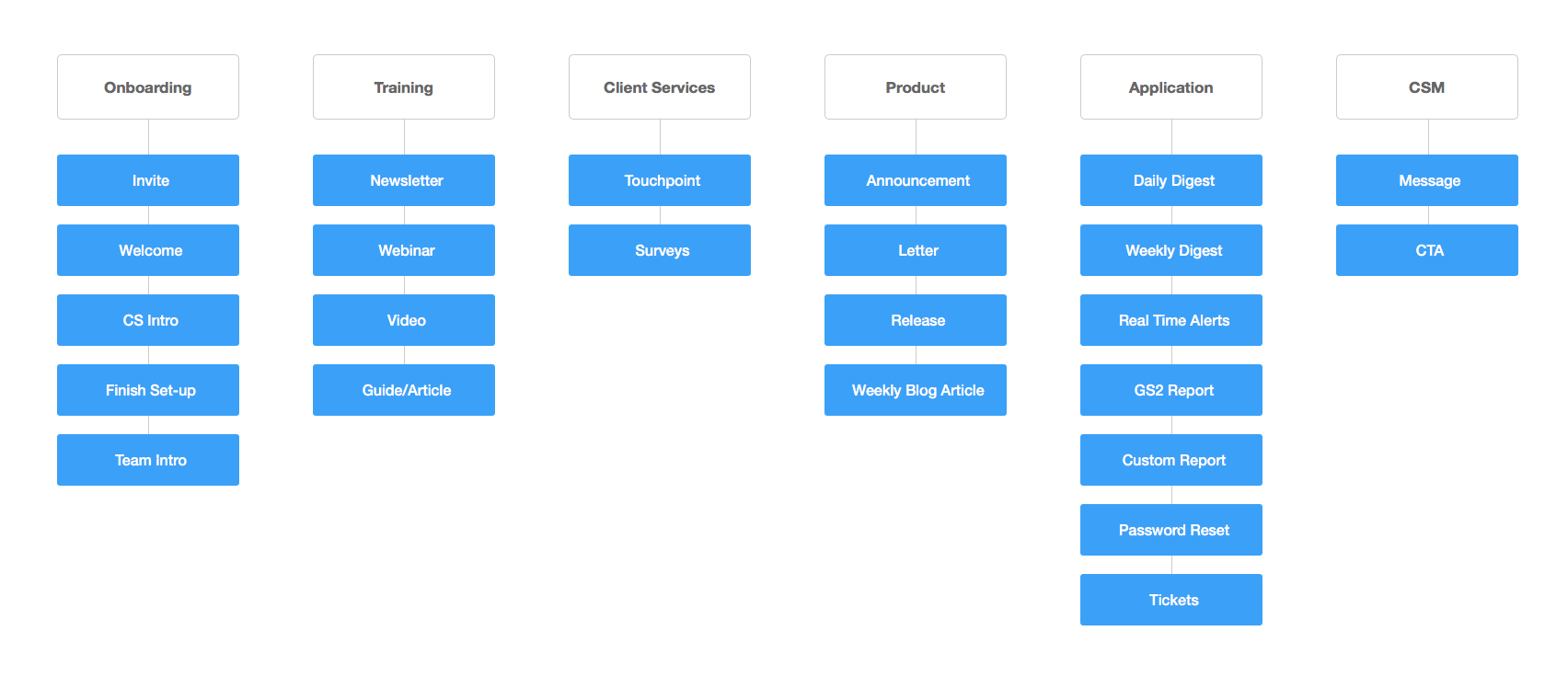
Then we started identifying the types of modules we would need to account for:

Surveys
Surveys was a super simple way of capturing guest feedback in the lobby and then syncing that data inside the Revinate application. We were only able to give the project a re-skin, but I think we did a good job given the restraints.
This was the product we inherited:
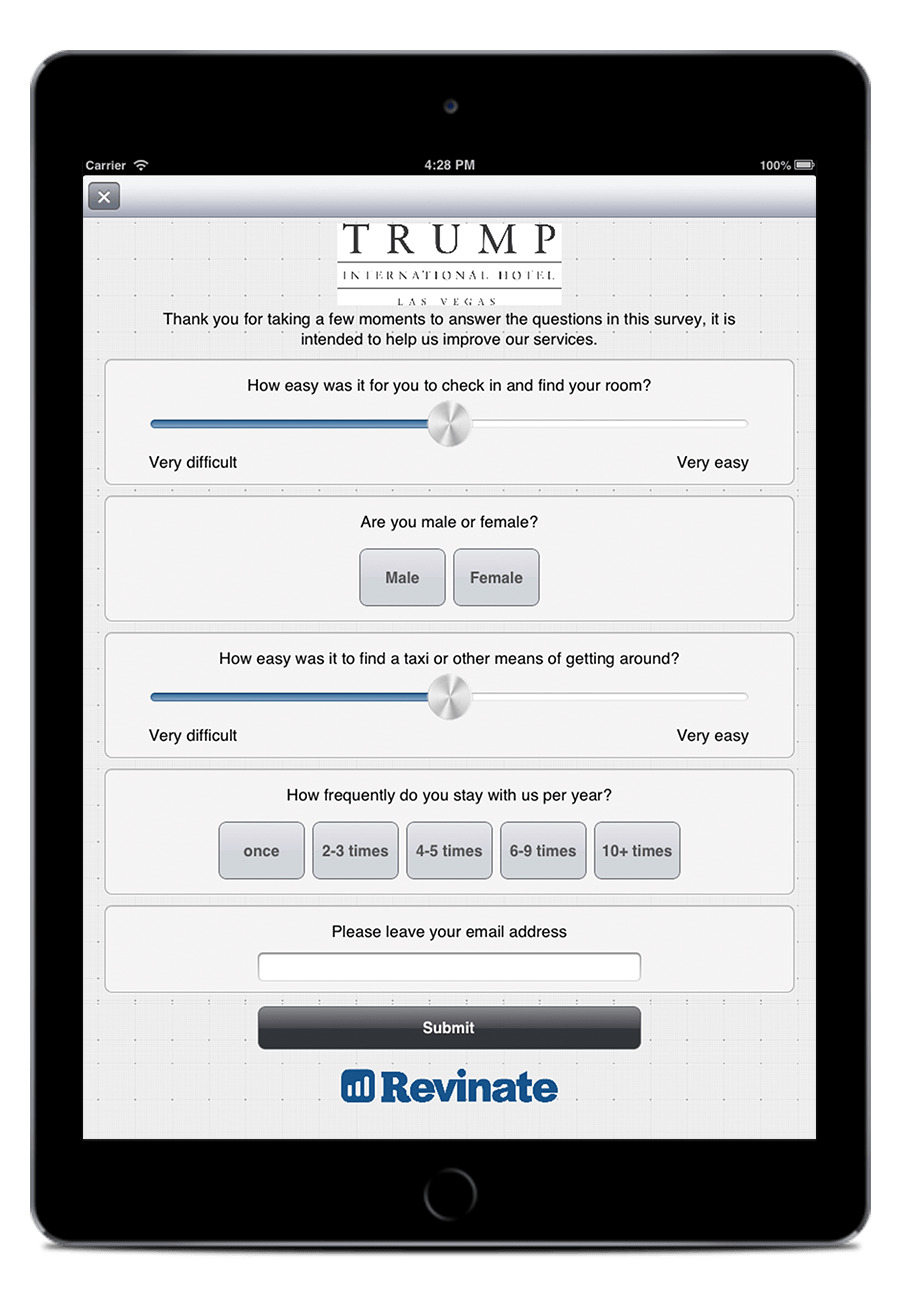
The bar was pretty low, so we knew that with a little organization and some better visuals we could get this product into shape without much development overhead. We started by exploring simple solutions and moved on to documenting the specifications.
We got to work with the developers and came to a place where it looked like it belonged with the rest of the product suite.
The Outcome
My time at Revinate allowed me to grow in multiple ways. I got better at my knowledge of global design, got to dip my toe in management, interfaced with multiple department heads, drove better process, and had a real impact on the culture and brand. I went into the experience looking for a chance to make a difference through design, and I can say that looking back I had a hand in so many aspects of the company.
© Jon Kerwin 2020
